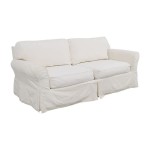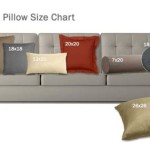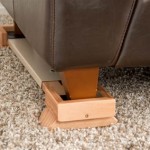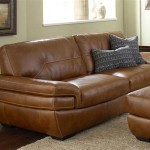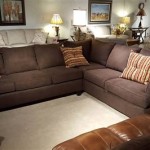4-Seat Sofa Dimensions: A Comprehensive Guide
Selecting a sofa is a significant investment and a crucial element in defining the aesthetic and functionality of a living space. When considering a 4-seat sofa, understanding its dimensions is paramount to ensuring it fits comfortably within the intended area and meets the specific needs of the occupants. This article provides a comprehensive overview of 4-seat sofa dimensions, exploring the various factors that influence these measurements and offering guidance for choosing the right size.
A 4-seat sofa, as the name suggests, is designed to comfortably accommodate four adults. However, the actual dimensions can vary significantly based on several factors, including the style of the sofa, the design of the arms, and the overall intended aesthetic. Ignoring these variations can lead to a sofa that feels too cramped or overwhelming for the allocated space.
The dimensions of a 4-seat sofa are typically measured in three primary areas: length (or width), depth, and height. Each of these measurements plays a crucial role in determining the overall comfort and suitability of the sofa for a particular room.
Understanding Length or Width
The length, also sometimes referred to as width, is the most obvious dimension and refers to the overall span of the sofa from one armrest to the other. This measurement is crucial for determining whether the sofa will fit comfortably along a wall or within a designated seating area. A typical 4-seat sofa can range from 85 inches to well over 100 inches in length. The style of the armrests significantly contributes to this variation. Sofas with wider, rolled arms will naturally have a greater overall length compared to those with slim, track arms.
When considering the length, it is essential to factor in the surrounding furniture and the overall flow of the room. Leaving adequate space for walking around the sofa and accessing other areas of the room is paramount. A general rule of thumb is to allow at least 30 inches of walking space around the sofa. In smaller spaces, this may be reduced slightly, but it is important to avoid creating a cramped or cluttered feel.
The internal seating length, which is the space between the inner sides of the armrests, is often a more practical measurement for determining actual seating capacity. While a sofa may be technically considered a "4-seater" based on its overall length, the internal seating length might be insufficient to comfortably accommodate four adults. Therefore, it is advisable to inquire about or measure the internal seating length when evaluating a 4-seat sofa.
Furthermore, consider the placement of other furniture pieces such as coffee tables, side tables, and lamps. The length of the sofa should ideally be proportionate to these accompanying pieces to create a balanced and harmonious arrangement. A sofa that is significantly longer than the coffee table, for example, may appear visually unbalanced.
Variations in length can also arise from design choices. For instance, a sofa with a chaise lounge attachment will naturally have a greater overall length than a standard 4-seat sofa. The positioning of the chaise, whether on the left or right side, should also be carefully considered in relation to the layout of the room.
Analyzing Depth and Seat Depth
The depth of a sofa refers to the measurement from the front edge of the seat to the back of the sofa frame. This dimension is crucial for determining the overall comfort and posture of the occupants. A typical 4-seat sofa has a depth ranging from 35 inches to 40 inches. However, deeper sofas, exceeding 40 inches, are becoming increasingly popular, offering a more relaxed and lounge-like seating experience.
Seat depth, which is the measurement from the front edge of the seat to the back cushion, is an equally important consideration. A shallower seat depth, typically around 20-22 inches, is often preferred for individuals who prefer a more upright seating position. Deeper seat depths, ranging from 24 inches to 28 inches or more, are ideal for lounging and relaxation.
The choice of depth and seat depth should be tailored to the individual's preferences and the intended use of the sofa. For a formal living room, a sofa with a moderate depth and seat depth may be more appropriate. For a family room or media room, a deeper sofa with a generous seat depth might be preferred for comfortable movie nights and relaxation.
The depth of the sofa also impacts the amount of floor space it occupies. In smaller rooms, a shallower sofa may be necessary to avoid overwhelming the space. Conversely, in larger rooms, a deeper sofa can create a more inviting and comfortable seating area.
Consider the back cushion design when evaluating depth. Sofas with thicker, more plush back cushions will naturally have a shallower seat depth compared to sofas with thinner, firmer cushions. If the seat depth is a critical factor, it is advisable to test the sofa in person or inquire about the actual seat depth with the cushions in place.
Examining Height and Back Height
The height of a sofa refers to the measurement from the floor to the top of the back frame. This dimension contributes to the overall visual impact of the sofa and its relationship to the surrounding furniture. A typical 4-seat sofa has a height ranging from 30 inches to 36 inches. However, taller sofas, exceeding 36 inches, can create a more formal and imposing presence.
Back height, which is the measurement from the seat to the top of the back cushion, is an important factor in determining the level of back support provided by the sofa. Higher back heights offer more support for the head and neck, making them ideal for individuals who prefer to sit upright for extended periods. Lower back heights offer a more casual and relaxed seating experience.
The height of the sofa should be considered in relation to the overall height of the room and the surrounding furniture. In rooms with low ceilings, a taller sofa may feel overwhelming. Conversely, in rooms with high ceilings, a lower sofa may appear visually dwarfed.
The arm height is another important consideration. The height of the armrests should be comfortable for resting the arms and shoulders. Generally, armrests that are too low can cause discomfort, while armrests that are too high can feel awkward.
The leg height of the sofa also contributes to its overall height and aesthetic. Sofas with taller legs, often referred to as "exposed leg" sofas, create a more open and airy feel. Sofas with shorter legs, or no visible legs, tend to have a more grounded and substantial appearance.
Ultimately, selecting the correct dimensions for a 4-seat sofa requires careful consideration of the available space, the intended use of the sofa, and the individual preferences of the occupants. By understanding the various factors that influence length, depth, and height, one can choose a sofa that is both comfortable and aesthetically pleasing, enhancing the overall design and functionality of the living space.

4 Seat Sofa With Chaise Allform

Leah Fabric 4 Seater Sofa Sofaandbed Sg

Kettal Molo Sofa 4 Seat Hundred Mile Home New York

Forea 4 Seater L Shaped Sofa With Foot Stool Dark Grey Furnituredirect Com My

Calisto 4 Seater Fabric Sofa Houzlook

Sofa Dimensions For 2 3 4 And 5 Person Couches Charts Diagrams Bed Small Spaces Formal Living Room Designs

Charlotte 4 Seat Sofa With Footstool Light Grey The Great British Company

Linspire Monet 4 Seater Sofa Cream White Sofas Ottomans Urban S

Kensington 4 Seater Sofa The Great British Company

Peyton 4 Seater Fabric Right Corner Sofa Home Centre Uae

